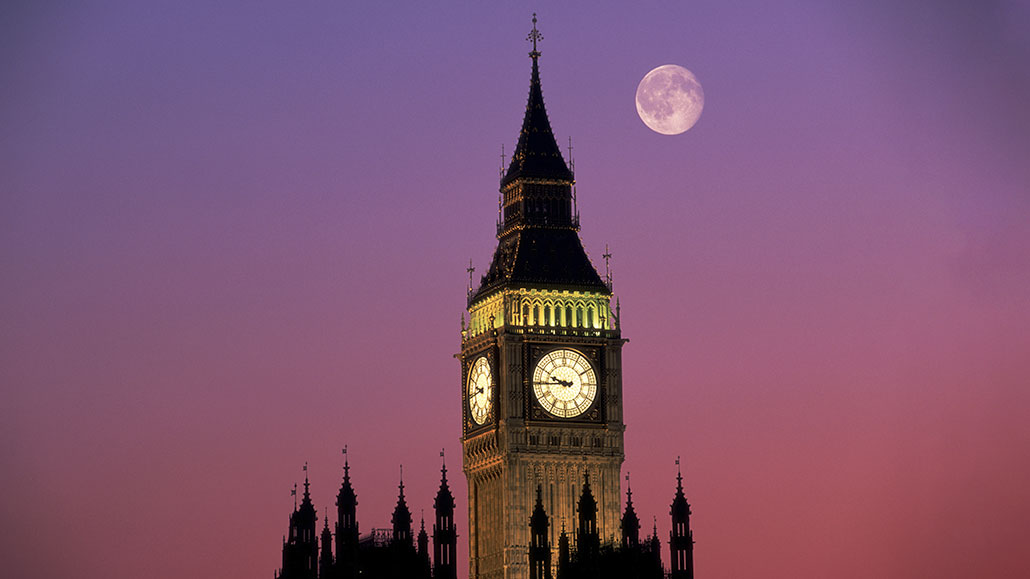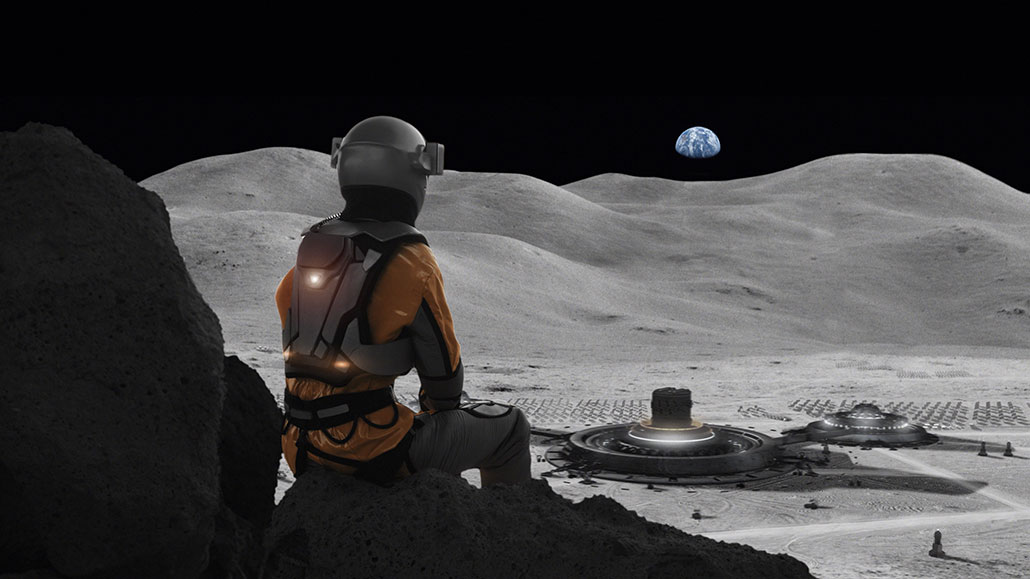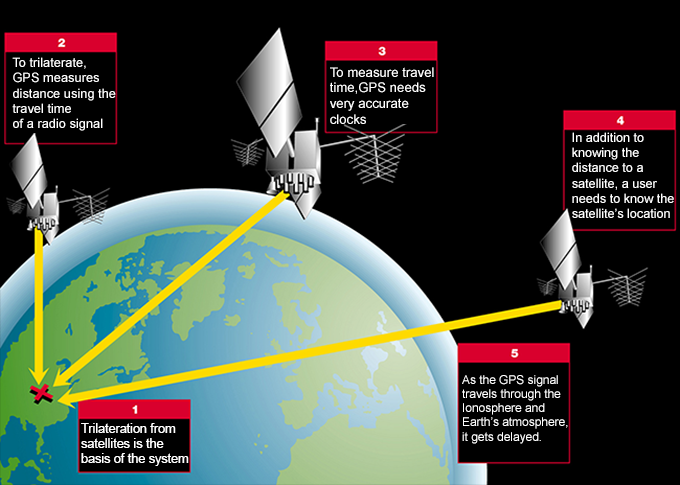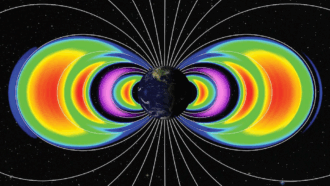Here’s why the moon must get its own time zone
Astronauts will need to know what time it is to live, work and get around on the moon

We can figure out what time it is anywhere on Earth. But with the moon poised to be a big player in space exploration, scientists now realize they must also define what time it is there.
Romilly Lockyer/The Image Bank/Getty Images Plus
Share this:
- Share via email (Opens in new window) Email
- Click to share on Facebook (Opens in new window) Facebook
- Click to share on X (Opens in new window) X
- Click to share on Pinterest (Opens in new window) Pinterest
- Click to share on Reddit (Opens in new window) Reddit
- Share to Google Classroom (Opens in new window) Google Classroom
- Click to print (Opens in new window) Print
By Tammy Awtry
A quick glance at your watch or phone tells you the local time. Figuring out the time elsewhere is fairly easy — if you know its time zone. But what if you want to know the time somewhere not on Earth, such as on our moon? In fact, nobody knows what time it is on the moon. And that could pose big problems for future astronauts. That’s why scientists are hard at work trying to figure out what moon time should be.
It’s been 50 years since the last astronaut stepped on the moon. Back then, there was no need for a designated moon time, Jörg Hahn notes. For short missions, astronauts could easily stick with the time used by their team leaders on Earth. Hahn is an engineer in the Netherlands. He works for the European Space Agency (ESA) in Noordwijk-Binnen.
But the moon is about to become a big player in space exploration — and longer missions. Space agencies around the world see its potential for big scientific discoveries. NASA’s Artemis program is readying to send astronauts back to the moon, perhaps within two years.
Permanent bases will be established where astronauts can live and study lunar science. There, they will test systems to communicate with each other and Earth, as well as learn how to make living on Mars possible. And when we are ready to travel to Mars, the moon will be our launching pad.
Scientists have realized they need an official moon time to efficiently carry out such big plans. But establishing moon time is no simple matter. There are lots of things to consider and agree upon. Plus, time on the moon ticks off at a different rate than that on Earth. So moon time will always be out of sync with the time experienced by anyone back on our planet.

One big issue: Should moon time be similar to Earth time?
“If we want [humans] to populate the moon and, later, Mars,” Hahn explains, we will need some reference time for the moon — “like we have on Earth.” Defining moon time would let astronauts work together and organize their days. It would be chaos if everyone followed their own time.
On Earth, clocks and time zones are based on what’s known as Coordinated Universal Time, or UTC. (This reference time is equal to the old Greenwich Mean Time, or GMT, based in England.) For example, New York City is UTC–5. That means it’s five hours behind the UTC clock. At UTC+1, Paris, France, is one hour ahead of UTC time.
Moon time could synchronize with UTC — or tick independently of it.
Some people favor basing moon time on UTC. After all, astronauts are already familiar with it. Astrophysicist Frédéric Meynadier, for one, believes this is the best solution. Meynadier works at the Bureau of Weights and Measures (BIPM) outside Paris. His job is to keep track of UTC. In other words, he’s a professional timekeeper.
“I’m biased because I take care of UTC,” Meynadier admits. “The U in UTC stands for universal.” And to his mind, it literally “should be used everywhere. I think, in the end, time for humanity is bound to Earth. Our biology is linked to that.”
He’s referring to the fact that most life on Earth operates on a roughly 24-hour — or day-long — cycle. It’s known as a circadian cycle. It dictates when we should sleep, eat or exercise.
But a moon day lasts roughly 29.5 Earth days. Our bodies are not wired to cope with roughly month-long days. Relating moon time to UTC as we attempt to maintain a 24-hour day could keep our bodies on a healthier schedule, Meynadier argues.
To know where you are, you must know what time it is
Then there’s the issue of navigation. To know our location, we must know the time.
Global Positioning System (GPS) receivers are all around us, including in our smartphones and in many cars. GPS tells us how to get where we want and how to get home when we’re lost. To do this, it uses satellites and receivers.
More than 30 GPS satellites orbit high above Earth. They constantly send out signals that the receiver in your smartphone can hear. Because your phone knows where each satellite is in space, it can calculate how long the GPS signal took to reach you. To pinpoint your location, a GPS receiver calculates how far you are from four satellites. The receiver in a smartphone can identify where you are within 4.9 meters, or roughly 16 feet. That’s about the length of a mid-size SUV.
But determining your location with GPS requires knowing exactly what time it is. The more accurate the clock, the more precisely you can know where you are. Satellites use atomic clocks, which can measure time down to the nanosecond (one billionth of a second).

Accurately pinpointing where you are — or want to go — in space is a big concern for scientists and astronauts. Like Earth’s GPS, a navigation system is being planned for the moon. Satellites with atomic clocks will be put in orbit around the moon. This will allow astronauts to know where they are as they explore the lunar surface and how to find their way back to base if they get lost.
But there’s a wrinkle: Gravity warps time. Simply put: The stronger the pull of gravity, the more slowly a clock will tick.
Albert Einstein predicted this with his general theory of relativity. Gravity on the moon is weaker than on Earth (think of astronauts bouncing effortlessly on the lunar surface). So lunar clocks will tick about 56 microseconds (0.000056 seconds) faster per day. This won’t make much of a difference when astronauts plan their days. However, it will greatly affect how well their navigation systems work.
Remember, accurate GPS requires knowing time down to the nanosecond. And a difference of 56 microseconds is 56,000 nanoseconds! So for lunar navigation systems to work correctly, astronauts will need clocks that account for the moon’s gravity.
Moon time will also be needed for the lunar ‘internet’
Increasingly, life on Earth has come to depend on the internet. It helps us communicate, share information and work together. Living on the moon will require a similar system. Enter NASA’s LunaNet.
“LunaNet is like the internet if it were combined with GPS,” explains Cheryl Gramling. She leads NASA’s lunar positioning, navigation and timing program. It’s based at the Goddard Space Flight Center in Greenbelt, Md. LunaNet aims to combine the best of both GPS and the Web. It can send and receive information as well as know your location. So LunaNet will allow your moon selfies to be marked with the time and location at which you took them — and send them home to Earth (to make your friends jealous).
LunaNet will serve many roles, Gramling notes. It’s needed so people “can safely land on the moon, then explore by planning their route from one location to another.” It will aid navigation and help astronauts figure out “how long it will take to get back to the habitat in time for dinner.”
It will also be key for communication. To work cooperatively on the moon, space crews and rovers will need to share information back and forth. Through LunaNet, moon crews will be able to send data about their discoveries to Earth — and even video chat with their families.
But to handle these tasks, LunaNet needs to keep consistent time. So scientists want it tied to atomic clocks whose ticking rates will be governed by the moon’s gravity, not the Earth’s.
How do we define time?
True universal time “does not exist,” Meynadier explains. “There is no absolute time.” People have defined time for their planet. Now it is necessary to do it for other celestial bodies. For successful space exploration, he argues, all nations need to speak the same time language.
NASA and ESA are the agencies working to define moon time, says Pietro Giordano. He works at ESA as a radio navigation engineer in Noordwijk-Binnen. The space agencies began their discussions on devising a moon time last November at ESA’s European Space Research and Technology Center in the Netherlands. NASA and ESA recognize that many nations will one day use the moon. They now hope other space agencies will help in defining its time, Giordano says.
Neither NASA nor ESA is sure when a decision on the moon’s time will emerge. It’s a complex problem that needs to be done right to avoid problems in the future, Giordano explains. Operating systems from different nations need to adopt the same timescale so they can work together.
In the meantime, we are left to dream about the future of space exploration. When we travel through time zones on Earth, our smartphone adjusts and gives us the correct time for where we are. ESA engineer Hahn hopes something similar can one day tell us moon and Mars time.
But first, we have to define them.






